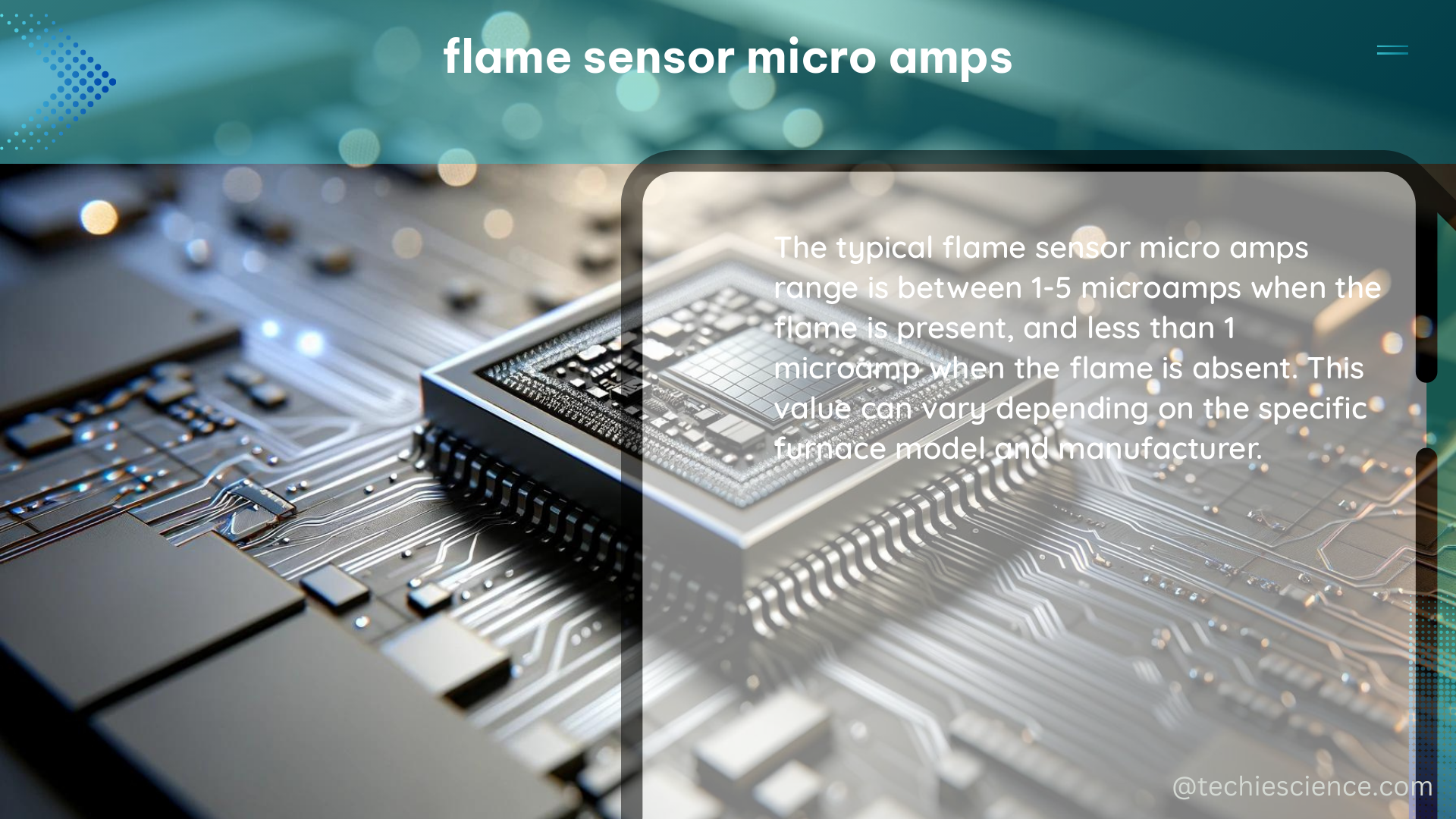Flame sensors are critical components in various applications, including gas leak detection, combustion safety, and hypersonic weapons detection. These sensors operate by detecting the presence of a flame and converting it into an electrical signal. The micro-amps generated by flame sensors are a crucial measurable and quantifiable data point that can provide valuable insights into the sensor’s performance and the flame’s characteristics.
Understanding Flame Sensor Micro Amps
Flame sensors typically generate micro-amps (μA) in the presence of a flame. The exact micro-amp output can vary depending on the sensor’s design, the flame’s intensity, and other factors. For example, a high-quality broad-area quantum cascade laser (QCL) emitter can generate up to 7 W of continuous wave (CW) optical power, which can be modulated at MHz frequencies for compatible defense applications. This modulation can result in micro-amp signals that are detectable by appropriate sensor systems.
Factors Affecting Micro-Amp Output
The micro-amp output of a flame sensor can be influenced by several factors, including:
-
Sensor Design: The type of flame sensor, its materials, and the underlying detection mechanism can all impact the micro-amp output. For instance, ultraviolet (UV) flame sensors typically generate higher micro-amp signals compared to infrared (IR) sensors due to their increased sensitivity to the UV radiation emitted by flames.
-
Flame Intensity: The intensity of the flame being detected can directly affect the micro-amp output. Stronger flames generally produce higher micro-amp signals, while weaker flames may result in lower micro-amp readings.
-
Environmental Conditions: Factors such as temperature, humidity, and air pressure can influence the flame sensor’s performance and, consequently, the micro-amp output.
-
Sensor Aging and Degradation: Over time, flame sensors can experience degradation, which can lead to changes in their micro-amp output. Regular calibration and maintenance are essential to ensure accurate and reliable measurements.
Micro-Amp Measurement and Interpretation
Accurately measuring and interpreting the micro-amp output from flame sensors is crucial for various applications. Here are some key considerations:
-
Measurement Techniques: Flame sensor micro-amps are typically measured using specialized electronic instruments, such as multimeters or current-sensing circuits. Proper calibration and setup of these measurement devices are essential to ensure accurate readings.
-
Baseline Micro-Amps: Every flame sensor has a baseline micro-amp output, even in the absence of a flame. This baseline value can be used as a reference point to detect the presence and intensity of a flame.
-
Micro-Amp Thresholds: Depending on the application, specific micro-amp thresholds may be defined to trigger alarms, safety mechanisms, or other actions. These thresholds are typically determined through extensive testing and calibration.
-
Micro-Amp Trends: Analyzing the trends in micro-amp output over time can provide valuable insights into the sensor’s performance, the flame’s behavior, and potential issues that may arise.
Applications of Flame Sensor Micro Amps

Flame sensor micro-amps have a wide range of applications, including:
Hypersonic Weapons Detection
In the context of hypersonic weapons detection, flame sensors play a crucial role in detecting and tracking these high-speed projectiles. The micro-amp signals generated by flame sensors can be integrated with other sensor data to enhance the overall performance of the detection system.
Energy Auditing and Efficiency Planning
Micro-amps from flame sensors can be used in energy auditing and efficiency planning to monitor energy consumption and identify areas for improvement. By analyzing the micro-amp signals, auditors can identify energy-intensive processes and recommend strategies for reducing energy consumption.
Combustion Safety and Gas Leak Detection
Flame sensors are essential for combustion safety and gas leak detection applications. The micro-amp signals generated by these sensors can be used to monitor the presence and intensity of flames, triggering safety mechanisms or alarms in the event of a potential hazard.
Industrial Process Monitoring
In industrial settings, flame sensor micro-amps can be used to monitor and optimize various processes, such as furnace operations, boiler efficiency, and chemical reactions. By tracking the micro-amp signals, operators can identify process anomalies and make informed decisions to improve efficiency and productivity.
Conclusion
Flame sensor micro-amps are a critical measurable and quantifiable data point that can provide valuable insights into the sensor’s performance and the flame’s characteristics. Understanding the factors that affect micro-amp output, as well as the techniques for measurement and interpretation, is essential for effectively utilizing flame sensors in a wide range of applications, from hypersonic weapons detection to energy auditing and industrial process monitoring.
References:
- DoD SBIR 23.1 Study on Hypersonic Weapons Detection
- Energy Audit Manual and Tool
- Control Valve Handbook

The lambdageeks.com Core SME Team is a group of experienced subject matter experts from diverse scientific and technical fields including Physics, Chemistry, Technology,Electronics & Electrical Engineering, Automotive, Mechanical Engineering. Our team collaborates to create high-quality, well-researched articles on a wide range of science and technology topics for the lambdageeks.com website.
All Our Senior SME are having more than 7 Years of experience in the respective fields . They are either Working Industry Professionals or assocaited With different Universities. Refer Our Authors Page to get to know About our Core SMEs.